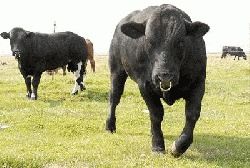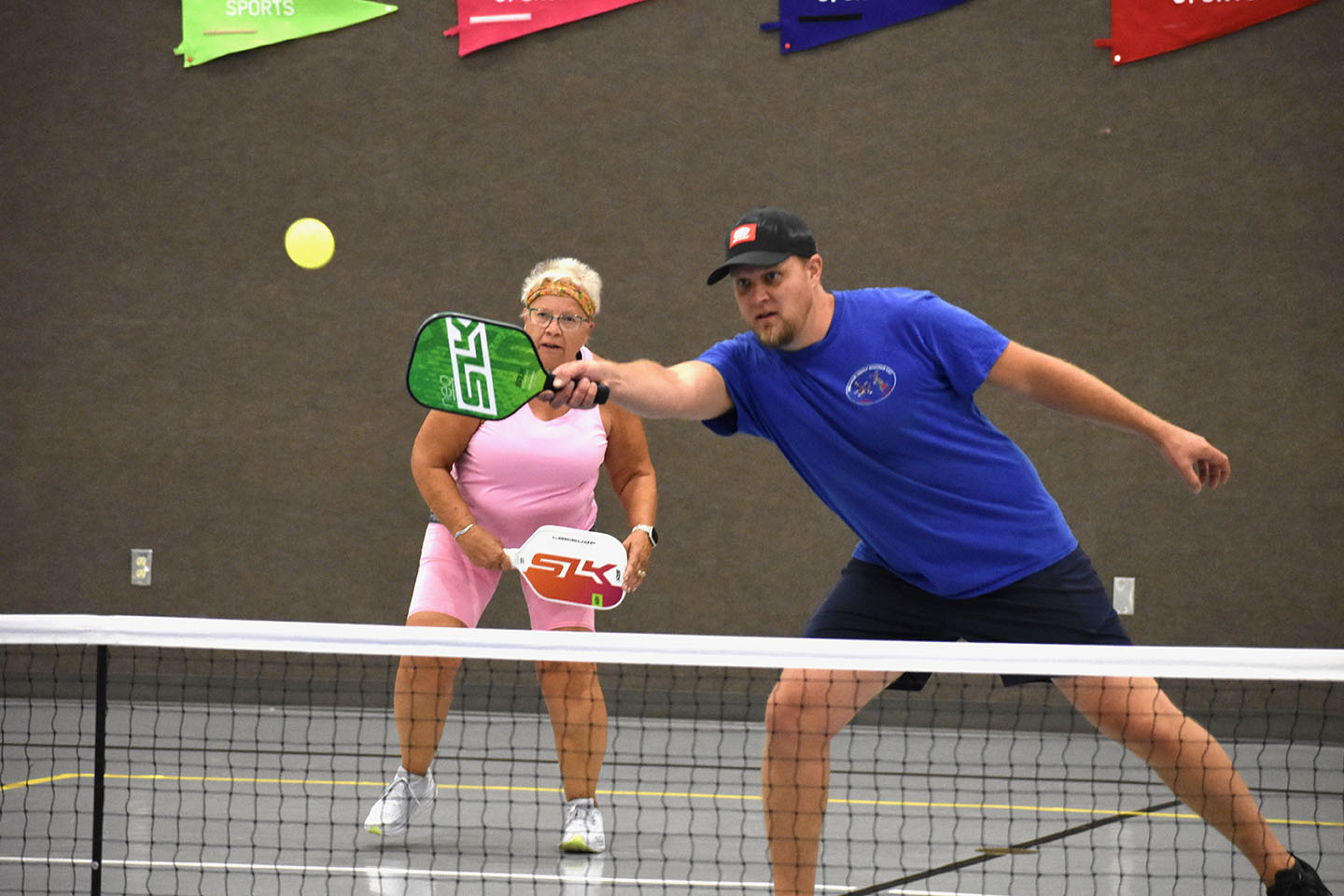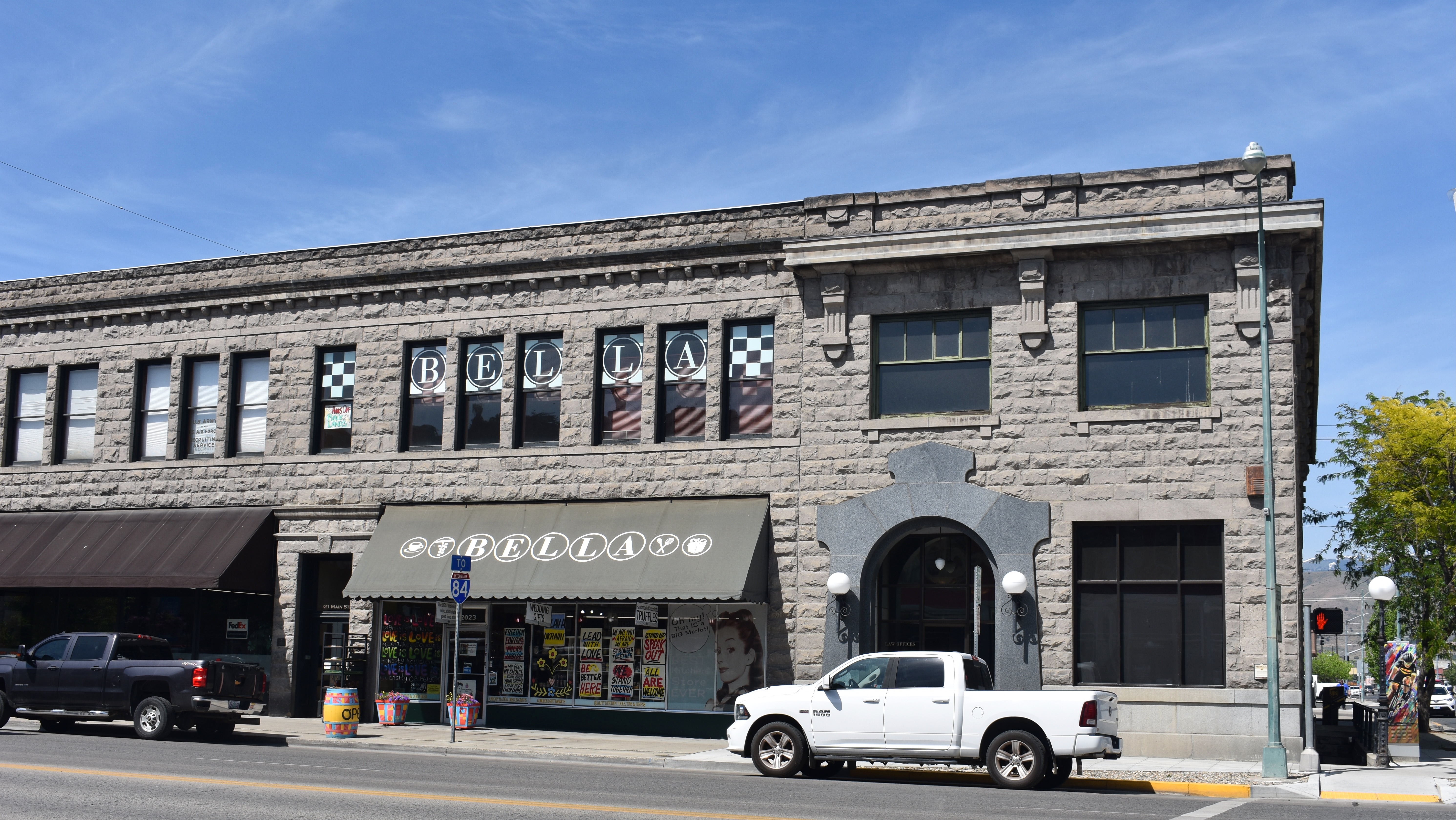Belgian Blues: Beefy Beefs now in Baker County
Published 12:00 am Monday, September 11, 2006

- Belgian Blue bulls appear to have been chiseled from stone. Jim Hunt said the European Belgians make this one look very small. (Baker City Herald/S. John Collins).
By MIKE FERGUSON
Sharon Hunt remembers well the first time she saw a Belgian Blue bull. He was lying down in a pen. When he got up, Hunt sucked in her breath.
It was love at first sight, she says.
andquot;I thought it was a freak show,andquot; she said. andquot;He was awesome!andquot;
The cattle, which have been raised in this country for only about 20 years, are a unique blend of mellow and muscle. You can walk through a pen that is home to two bulls and not worry about turning your back on them.
Hunt, who with her husband Jim operates the JSH Blues Ranch outside Haines, calls the breed andquot;Arnold Schwarzenegger on steroidsandquot; after the California governor, actor and bodybuilding champion.
And while the cattle may look like they’ve ingested performance enhancing drugs, the muscle is all natural.
Belgian Blues come upon their buffness genetically, not pharmaceutically.
andquot;They’ve got a naturally high level of growth hormone,andquot; Sharon Hunt explained. That makes the cattle perfect candidates for medical studies that may one day benefit human beings. Imagine, she says, what that naturally-occurring level of growth hormone could do, for example, for a person with Muscular Dystrophy.
The Hunts began raising their beefy beef while living in Turlock, Calif. After the couple completed their careers with Pacific Bell Telephone, they packed up their small herd 18 months ago and moved to Haines.
Already two of their bulls, Tuffy and Drummer, have managed to make names for themselves. Last month they brought back champion and reserve champion yearling ribbons from the Iowa State Fair, one of only three shows nationally that features Belgian Blues (the others are in Tulsa, Okla., and Houston).
About 80 animals competed at the Iowa State Fair, which is held in Des Moines.
A heifer the Hunts showed at the Iowa State Fair wasn’t so lucky. Once she was back home, she got tangled up in a feeder and broke her leg.
The good part of that sad story, Sharon said, was that andquot;I got a new beef customer because of it.andquot;
Jim Hunt is secretary-treasurer of the American Belgian Blue Breeders Association. Only two ranches in Oregon, the Hunts and the Kalsch family of Hillsboro, are association members. In fact, there are only five members west of the Rockies.
andquot;It’s pretty much a midwest phenomenon,andquot; Sharon said.
Belgian Blues were first bred about 150 years ago in Belgium as both milking and beef cows.
As with any other breed, there are pluses and minuses, she says. With their shorter muscle fiber, Belgian Blues produce a very tender steak with very little fat about 25 percent is lost on the trimming floor versus up to 40 percent for other breeds.
The meat is super-healthy, she says. Pound for pound, it’s got less cholesterol than skinless chicken, according to breeders association.
The cattle are adaptable from bitter cold temperatures in Baker County, Denmark and Canada to hot summers in South America and Australia.
The biggest drawback and it’s what cattle people ask the Hunts first thing is calving problems.
andquot;They’ve got a big fat butt, and they don’t come out easily,andquot; she says matter-of-factly.
In Belgium, where the cattle originated, that’s not a big problem. Veterinarians there are paid by the government, and so Caesarian births are more affordable to ranchers.
In a U.S. operation, ranchers need to be careful that the females to be bred have a sufficiently wide birth canal, and Hunt checks each of her heifers. Those that don’t have the trait she butchers and sells to the public; call 856-3628 for more information.
andquot;This is a niche market, but we’re convinced it’s a growing market,andquot; Sharon said. andquot;It’s for people who are concerned about eating healthy.andquot;





